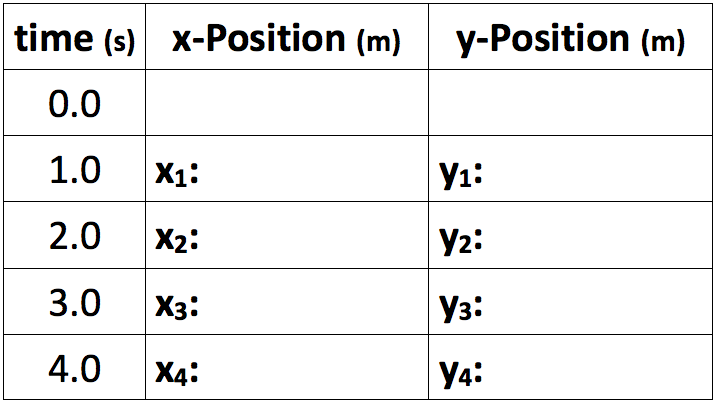Hold down the T key for 3 seconds to activate the audio accessibility mode, at which point you can click the K key to pause and resume audio. Useful for the Check Your Understanding and See Answers.
Trajectory - Horizontally Launched Projectiles - pvhelp
Each problem in this Concept Builder involves three tasks. The third task is to determine the values of the x- and y-positions at one second intervals of time from 1.0 second to 4.0 seconds.
Task 2:
A projectile is launched horizontally from a cliff top at 12 m/s. Determine the x- and y-positions at 1-second intervals of time. The launch location is the (0, 0) position.
A table is given similar to the one below. Values must be entered into the table for the bottom four rows. The top row is completed for the student with two zeroes.

Try this link to The Physics Classroom Tutorial for more help with the characteristics of projectile motion:
What is a Projectile?
Characteristics of a Projectile's Motion
Horizontal and Vertical Components of Velocity
Horizontal and Vertical Displacement